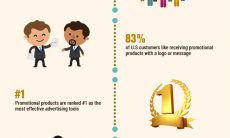The new world of B2B data!
In the last 10-15 years, we have seen an explosion in B2B data world not only in the amount and availability of data, but the usages as well. Compared to the days when we had only compiled data from firms such as D&B and response lists from trade magazines, we now have many more sources and options. This has lead to 5 significant trends in B2B database marketing.
- Big Data
The new buzz word is “big data,” and while it applies more to consumer unstructured data than structured B2B data, it also is interrupted as meaning “lots more data.” In this sense, the term applies to B2B, as not only do we have the traditional sources of data, but now internet, behavioral, and social data are added to these data sources. Few firms have actually gotten on top of this data explosion, but they are trying. Add to this the parallel explosion of marketing and sales software, and you have a rapidly evolving data world.
2. Integrated and enhanced databases
In most B2B firms there are at least four data silos – transactional, sales, marketing, and customer service. But, in fact, there are also silos within silos. Take marketing for example; it is common to find lead generation, outbound telemarketing, trade show, and inbound lists all in separate software systems. This is no longer the case, as B2B firms are merging all this data on customers and prospects into a single view integrated database. There are independent data firms who can do this more efficiently, as B2B data is very difficult to work with. These merged databases can be either accessed online or returned.
In addition, most B2B databases do not have full demographic or firmagraphic data. Once the internal data is merged and CASS certified, it then is frequently sent out to data compilers for enhancement with such data elements as the SIC and/or NAICS code, firm size by employees and revenue, plus other key descriptive elements. At this point the marketing and sales database is ready to take advantage of the following three trends.
3. Micro-segmentation and Personalization
Once the database is fully merged and enhanced, new opportunities for micro-segmentation become available. Why micro-segment? In a word, “relevancy!” The more relevant the communication, the higher the engagement and response rate. Isn’t that what we all strive to achieve – getting prospect and customers to listen and respond to our marketing communications. For more information on this topic, request one of our more popular white papers titled Profiling, Targeting and Segmentation.
The more relevant the communication the more it’s personal. The real definition of personalization is not using my name, but recognizing who I am in context with my current relationship and past contact with the individuals in your company.
4. Data Analysis and Analytics
Accurate and complete data opens up the opportunity for both traditional analyses and more sophisticated data analytics. Bad and incomplete data does not. Much has been written about using analysis and analytics for marketing and sales, and it’s mostly all true. But like software, if you don’t what you want to learn and do, analysis and analytics won’t get you there. So the first step is to determine what the basic questions are that need to be answered. Most of the time they revolve around logical issues, such as what are our most profitable market segments, what marketing campaigns worked best and why, how many more potential customers are there, who fit our best customer profile, etc. These basic marketing and sales questions can now be answered once an integrated database is built.
The next step is to use predictive analytics to uncover opportunities for improvement in marketing and sales that are not uncovered by simple analysis. In essence, it’s the ability uncover non-obvious correlations and insights. This is sophisticated data work and requires data scientists to do it. Unfortunately, there is a lack of such individuals, and finding one is very difficult. A recent article on internet job postings quoted a statistic that there were 36,000 job openings with the term “data scientists” in the description. Therefore, it is best to hire a firm who has such individuals rather than bringing one on board. Regardless of this issue, predictive analytics in B2B is here to stay, and needs to be used by all serious marketers.
5. Data-Driven Marketing and Sales
Now for the payoff of these trends – Selling More BY Spending Less! Yes, I know this may be Don Quixote’s quest, but it’s now in view if B2B firms shift into a data-driven approach. No longer should marketing and sales cling to traditional methods for the sake of comfort and familiarity. The new levels of data and insights that it brings to both marketing and sales should be embraced and applied to the firm’s business model and market. Clearly, the data-driven approach needs to be aligned and customized for best results, plus a trial and error period will be required. The result will be to answer the measurability and accountability question of “what did we get for our money?” A data-driven marketing and sales strategy will answer the question like never before.
There are more trends, but these five are enough to chew on for now.






